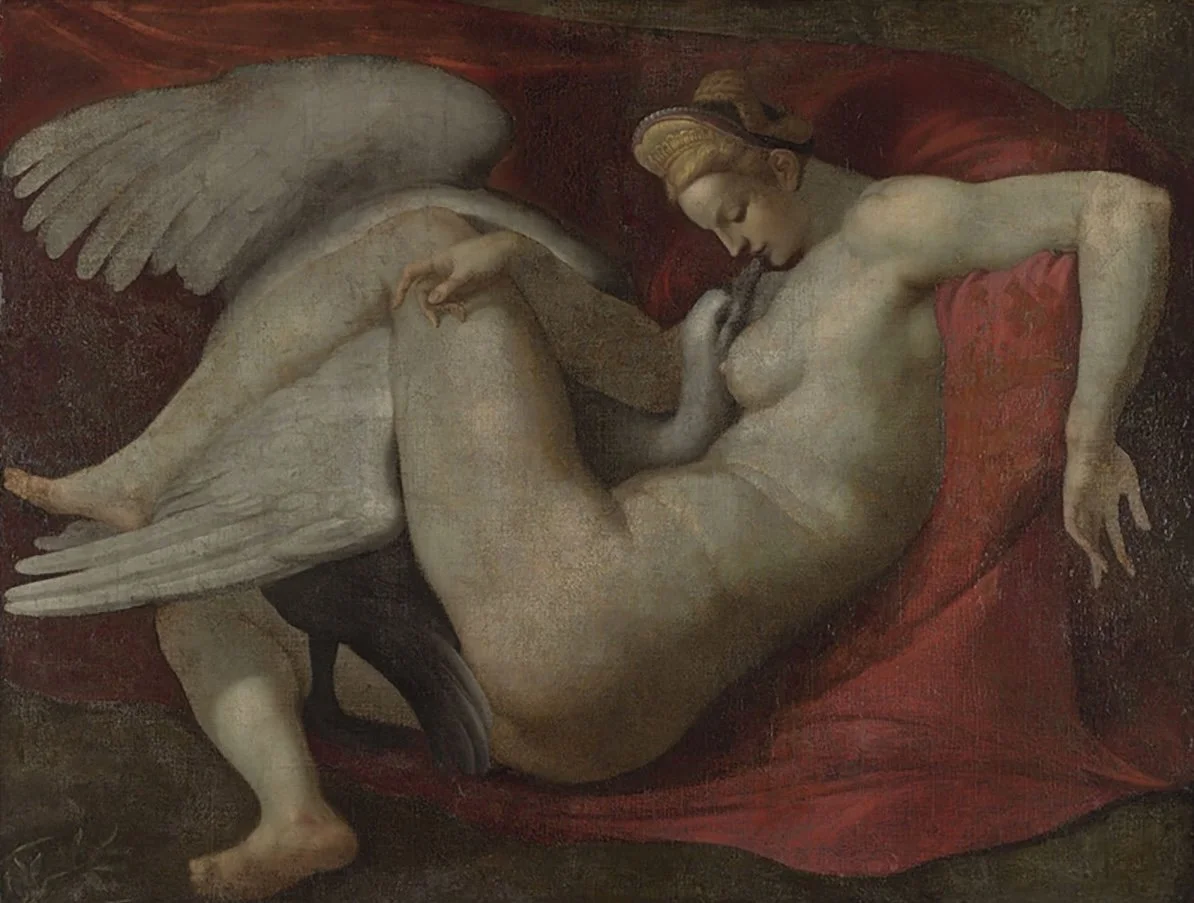What Your Art Teacher Didn’t Want To Say
From Botticelli's breezy Venus to Velázquez's perfect bottom, classical art is full of surprisingly steamy moments. Here’s how learning to see art through a sensual lens transforms every museum visit.
By Kim Gray
Gustav Klimt, The Kiss, Belvedere Museum in Vienna, Austria
History of Art – it sounds so formal and erudite, perhaps a little boring, but I beg to differ. One of my favourite ways to view much “fine” art is simply to look for its sexy suggestiveness. Art can be so very, very high-brow, learned and intelligent while at the same time so carnal and simple, requiring no background, no reading of the plaque on the museum wall.
Sandro Botticelli, Birth of Venus, Uffizi Galleries
Erotic images masquerading as Greek and Roman myths are my particular favourite. Botticelli’s Venus contains incredible symbolism, Christian metaphor and meaning, yeah, yeah, yeah, but just look at it! It’s a frothy and flirty image of a scantily-clad beauty with long, loose hair tickling her as she rides a seashell atop of waves in a gentle rain of flowers. It’s all sensuality – the soft curves and curls, salty bubbles and breathy breeze billowing chiffon. I can feel it all – velvet petals against bare skin, strands of hair and the hard shell on bare feet. No wonder the nymph is rushing to cover things up.
Cranach Lucas the Elder, Venus and Cupid with a Honeycomb, Galleria Borghese
I particularly love the way artists depict fabric and costumes that reveal far more than they conceal. The top that doesn’t actually contain a pert bosom and its rogue nipples. Or a whisper of fabric a poor lass must use to try and protect her modesty. Not only is it too small, but – oh my goodness – it’s transparent! I feel for you, Venus, at least you managed to find your fancy hat!
After Michelangelo, Leda and the Swan, National Gallery. Titian, Rape of Europa, Isabella Stewart Gardner Museum. Titian, Danaë and the Shower of Gold, Museo el Prado
When it comes to depicting sex, again the socially acceptable way was to draw from Greek and Roman myths. Leda and the Swan, The Rape of Europa or Danaë and the Shower of Gold are really quite outrageous if not presented “mythologically”. In these stories, Zeus comes to earth in different forms – a swan, a bull and a golden rain – to impregnate beautiful mortals. No consideration of consent, or concern about power imbalances, here.
Lucas Cranach the Elder, Adam and Eve, Courtauld Gallery. Peter Paul Rubens, The Landing of Maria de’ Medici at Marseille, Musée du Louvre. Venus de Milo, Greek Hellenistic period, Musée du Louvre.
It's also fun to view lust for different feminine bodies through the ages. Compare Cranach’s delicate Eve with her small breasts and milky skin to Rubens’ fleshy, dimpled and quivering bottoms and thighs. Or English and French aristocratic portraits with large almond eyes and double chins over gravity-defying chests only just covered by voluminous ballgowns. Has there ever been anything quite as alluring as the curves of the Venus de Milo? Two thousand years later, I would argue, possibly not.
I could go on and on. Rodin’s The Kiss – omg swoon; Velazquez’s Rokeby Venus is THE perfect bottom; Klimt’s the Kiss, or Lautrec’s lesbians…
Auguste Rodin, The Kiss, Tate Britain. Diego Velázquez, Rokeby Venus, The National Gallery. Henri de Toulouse-Lautrec, In Bed the Kiss, Private Collection.
While there are countless facets of eroticism based on the different variations of female form, the idealised male form seems to be far more consistent over time. Is the Apollo Belvedere’s physique really any different from Michelangelo’s David or one of Mapplethorpe’s male nudes? Broad form, strong muscles and powerful calm seem to sum up art’s idea of the ideal man. To be honest, it’s my ideal too! Maybe because, up until recently, most art was made by men for men, the male form wasn’t the subject of the sensuous gaze – at least not as often.
Michaelangelo, David, Ufffizzi Galeries. Robert Mapplethorpe, Derrick Cross, 1983, J. Paul Getty Museum.
Art can be read in so many ways. There’s the pure aesthetics of it: how does it look, and do you like it? There’s the historical, political, social and economic context of the art: what was happening in the world at the time, and what does it reveal about those who came before us? Then there’s the poetic meaning intended by the artist: what were they trying to express?
Of course, there’s also the feeling and meaning we take away from a piece of art, whether we’re knowledgeable or not. That meaning is 100 per cent in the eyes of the viewer and has no right or wrong. It’s completely subjective, and in my opinion, what separates great art from the rest. Does the artwork stir something in the viewer without prerequisite background knowledge? Is that meaning what the artist was trying to convey? For me, the artwork must be visually engaging on its own, separate from its meaning.
Next time you’re at a gallery, forget all you know – or don’t know – about art. Don’t read the bumph. Just look, enjoy and allow yourself a titillating smile when you know exactly what the artist was thinking. Art can be sex for the eyes; don’t be a prude, just enjoy it.
Our guest author Kim Gray is a writer and photographer who loves fresh perspectives and little stories . When she’s not decoding Botticelli’s flirty Venus, she’s capturing real-life beauty through her lens at www.photographybyktb.com.















